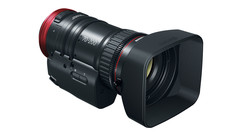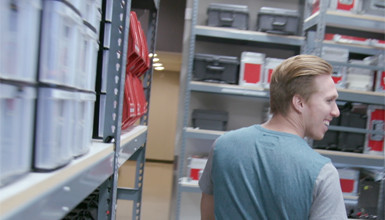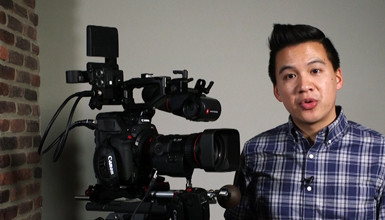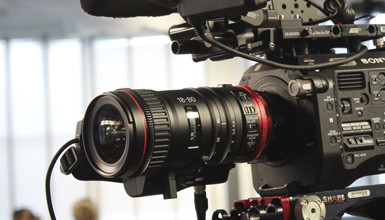The 70-200mm focal length is a perfect range for a second camera angle, portraits, and B-roll. So, I also decided to stage and shoot an interview with it. I used the 70-200mm with the Canon Compact-Servo 18-80mm T4.4 to see how they would pair together. In the footage below, I tested different aspects of the lens including the functionality and build, servo capabilities, and imaging characteristics. All the footage was shot in 4K.
Build and Functionality
The focal range of the Canon Compact-Servo 70-200mm is perfect for the long lens close-ups I needed for the run-and-gun shoot on the 606. The build of the lens made a handheld configuration very practical and easy to use. It is also a great weight to handhold all day and still get your best shots. In the interview shoot, it was the perfect B-roll and portrait focal length range. The constant T4.4 through the zoom range was necessary, as I was shooting at night. The metadata transfer was key as I could see the focal length, iris, and focus setting during the shoot.
Image Stabilization (IS)
This lens has multiple IS settings: Standard Mode, Maximum Mode, and Smooth Mode. This is especially helpful on a medium to telephoto zoom since the longer the focal length the more apparent shake is during movement which can be distracting. The switch is very easy to adjust on the fly on the side of the lens. I used Standard Mode (Mode A) for most of the handheld operation when I wasn't moving, but the shots were handheld and on the longer end of the zoom. During shots where I was physically moving (see the tracking shot of the feet walking during the interview B-roll), I switched to Maximum Mode (Mode B) since this mode is best when the camera is handheld and moving in order to maximize stabilization. I then switched to Smooth Mode (Mode C) for the static interview as I didn't need complete stabilization since the camera was on sticks, but I was panning left and right. You can also turn the IS mode off easily on the side of the lens if you are purely static.
Autofocus
I used manual focus for the interview set up, but the 606 was a perfect environment to test the Dual Pixel Autofocus capabilities of the lens with the C300 MK II. The transition from one runner to the next was extremely quiet and smooth, allowing me to focus on operating the camera with confidence that the shot would be in sharp focus. This opens up possibilities for a lot of shooting environments.
Servo
I used a configuration with the optional ZSG-C10 Zoom Servo Grip mounted to the side of the lens. I tested the zoom settings and found that on the servo you can adjust the speed from fast to slow. You can see in the video that I tried different speeds based on the subjects and look I was going for. The ability to start/stop from the servo is key. Just like the Compact Servo 18-80mm, the servo motors are integrated within the lens so you maintain servo zoom functionality even without the Zoom Sero Grip by utilizing the rocker switch on the side of the lens. You can also reposition the zoom servo grip to your handgrip of choice that uses a standard Arri rosette - now you have a nice handheld configuration.
Imaging Characteristics
The color rendition of the lens paired with the Canon C300 Mark II (shot in Canon Log3) is beautiful; look at skin tones and highlights especially. I also loved all the flares I was getting. Notice the bokeh of the out of focus headlights and full Chicago moon. The nine-bladed iris makes for beautiful bokeh – smooth, round orbs where highlight blurs have soft edges and demonstrate very minimal sharp distinctions between out-of-focus elements. I did rack focuses a lot to test the breathing and found it to be very minimal. You can look for this in the interview shoot where I rack to the background.















